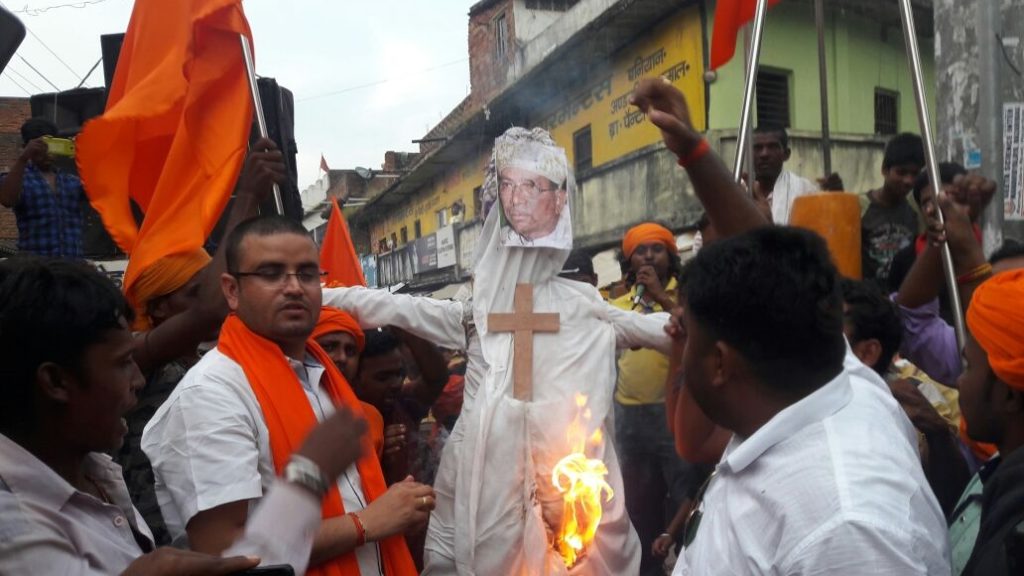ROME — In Western parts of the world, Christians often see “secularism” as a sort of bogeyman. Though technically it simply means the separation of church and state, for many Western believers it conjures up images of Gay Pride parades, legalized abortion, and gay marriage, and scorn for traditional religious belief and practice.
When observant Christians call Germany, for instance, or the U.K. or Holland, “highly secular,” it’s understood not to be much of a compliment.
In other neighborhoods, however, Christians often see secularism very differently. The classic example is the small Christian community in the Middle East, where state support for religion is a recipe for heartache, since the “religion” in question generally is some form of militant Islam.
Historically, Christians were among the founders and strongest supporters of secular parties across the Middle East, such as the Ba’ath Party in Syria and Kemalist parties in Turkey, seeing them as the best way to protect minority rights. Coptic Christians in Egypt today are in the vanguard of pressing for a secular democratic state, as opposed to a process of creeping Islamization.
A 2001 Pew Forum study of Evangelical attitudes around the world drove home the point. A stunning 90% of Evangelical leaders from North America defined secularism as a “major threat” to the faith, but two-thirds of Evangelicals in the Middle East reported “favorable” or “highly favorable” attitudes toward secularism.
In other words, when Christians are an embattled minority, secularism isn’t the enemy — it’s the last, best alternative to annihilation.
The insight helps explain why of late, some of the strongest Christian voices in the world in defense of secularism have come from India, where religious minorities of all sorts find themselves increasingly under pressure vis-à-vis what many observers call the country’s process of “saffronization” under the right-wing Hindu nationalist movements associated with Prime Minister Narendra Modi.
Saffron is the color symbolically linked to Hinduism, so “saffronization” refers to the imposition of a Hindu nationalist agenda on the country, for example through controversial anti-conversion laws which critics say are used to suppress and intimidate religious minorities. Observers say this “saffron wave” has been building since Modi came to power in 2014.
Last month, the Indian bishops’ conference issued a statement ahead of parliamentary elections scheduled for April and May, in which the prelates warned against “divisive attitudes, hate speeches, and fundamentalist movements” which, they claimed, “are eroding the pluralistic, secular ethos” of the country.
“There is an unprecedented religious polarization which is harming the cherished social harmony in our country and endangering democracy itself,” the bishops said.
The warning comes against the backdrop of a chronic, and growing, phenomenon of assaults on Christians in India, which tend to be especially common in states and other territories governed by Modi’s BLJ Party. An ecumenical watchdog group recently issued a report citing 720 incidents of violence against Christians in 2023, which works out to almost two such attacks every day of the year.
Emblematic of the trend were separate incidents which took place in early February involving the arrests of six Protestants, including two American nationals, and a Catholic priest, all charged with violations of state-level anti-conversion statutes.
In the northern state of Uttar Pradesh, Father Dominic Pinto of the Lucknow Diocese was arrested Feb. 5 along with six Protestants on charges of trying to convert poor Dalits, or “untouchables,” from Hinduism to Christianity, while in Assam, in far northeastern India, two American Baptists were fined Feb. 2 for engaging in religious activities that violated the conditions of their tourist visas.
Under international pressure, the Americans were released fairly quickly after being compelled to pay a fine and to promise not to engage in further religious activities. The Indians, however, remained behind bars, facing ill-defined legal challenges. The arrests came after mobs of Hindu radicals gathered in front of churches and other Christian gathering places, demanding that action be taken.
To be clear, anti-Christian violence in India is hardly a new story.
In 2008, an anti-Christian pogrom broke out in Kandhamal, in eastern India, which left 100 people dead and thousands injured and homeless. At one point, Sister Meena Lalita Barwa, a member of the Handmaids of Mary, was dragged into the street along with a local priest, Father Thomas Chellen, by frenzied attackers chanting “Kill Christians!”
The mob tried to force Chellen to rape Barwa, and, when he refused, they beat him savagely, stopping only because they thought he was dead. At least one man raped Barwa — she doesn’t know the exact number, because she lost consciousness during the assault — and she was then paraded naked through the streets.
That was 16 years ago, and, if anything, most observers believe the climate for Christians and other minorities in India today is even more precarious. In part, that’s because of geopolitics — India is seen in the West as a strategic offset against growing Chinese influence, and thus Modi’s record on human rights and religious freedom often is overlooked or downplayed.
The fact that it’s sometimes inconvenient to call attention to anti-Christian violence in India, however, doesn’t make it any less lethal — if anything, neglect creates an environment in which the perpetrators feel ever bolder.
Context, as ever, is king.
While Christians in the West may rue secular inroads against the faith, India’s small but vibrant Christian population — estimated at 26 million people, roughly 2.3% of the country — may emerge as secularism’s best friends on the global stage.

